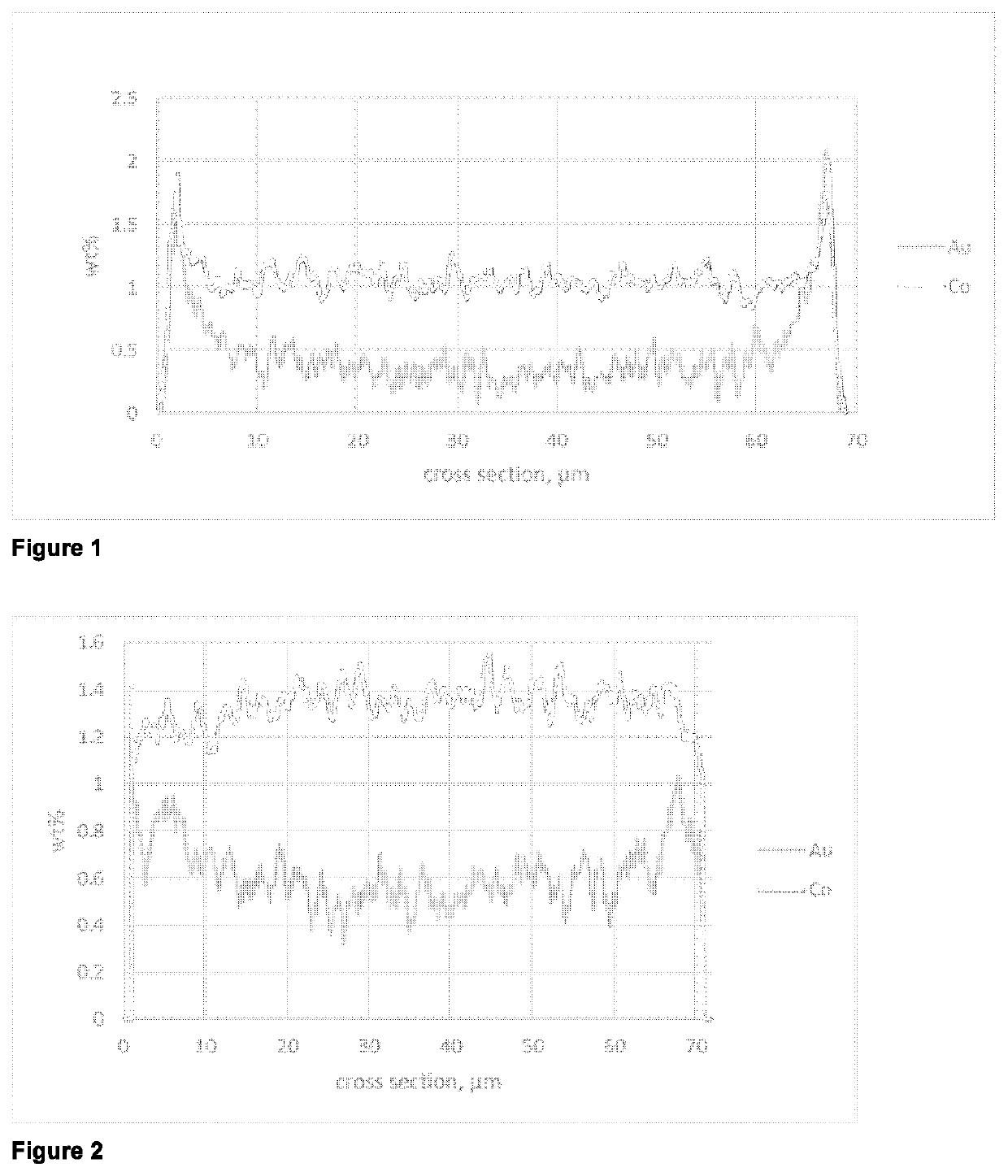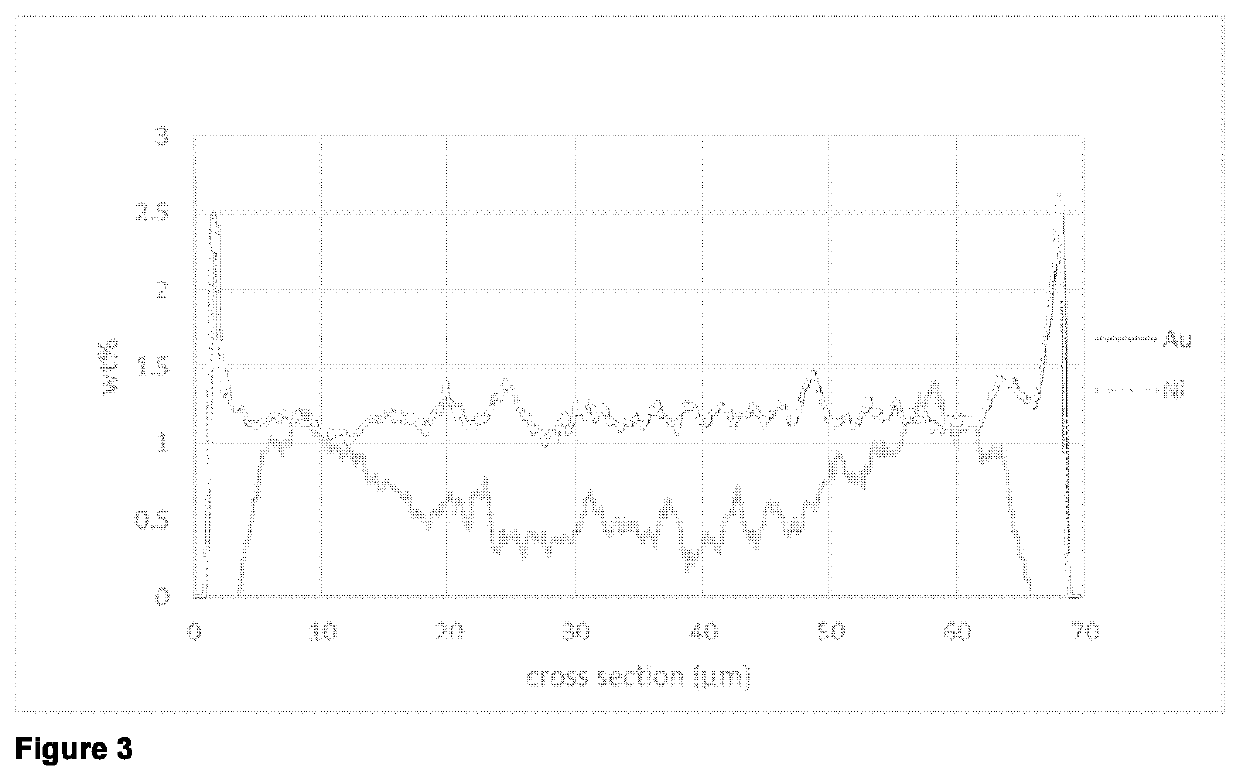Gold-based catalyst for oxidative esterification of aldehydes to carboxylic acid esters
a technology of oxidative esterification and gold-based catalysts, which is applied in the direction of catalyst activation/preparation, metal/metal-oxide/metal-hydroxide catalysts, physical/chemical process catalysts, etc., can solve the problem of insufficient activity and selectivity of mma, the catalyst produced by the inventive preparation method from this application is relatively sensitive to abrasion and unstabl
- Summary
- Abstract
- Description
- Claims
- Application Information
AI Technical Summary
Benefits of technology
Problems solved by technology
Method used
Image
Examples
example 2
[0060]A suspension of 10 g of the SiO2—Al2O3—MgO support from Example 1 in 33.3 g of demineralized water is heated to 90° C. and stirred at this temperature for 15 min. Added to this suspension while stirring is a solution, heated to 90° C. beforehand, of Co(NO3)2*6H2O (569 mg, 1.95 mmol) in 8.3 g of water. After the addition, the mixture was stirred at 90° C. for a further 30 min, then cooled down, filtered at room temperature and finally washed six times with 50 ml each time of water. The material was dried at 105° C. for 10 h, finely crushed with a mortar and pestle, then heated from 18° C. up to 450° C. within 1 h and then calcined at 450° C. for 5 h.
example 3
[0061]A suspension of 15 g of the SiO2—Al2O3—MgO support from Example 1 in 50 g of demineralized water is heated to 90° C. and stirred at this temperature for 15 min. Added to this suspension while stirring is a solution, heated to 90° C. beforehand, of CoCl2 (697 mg, 2.93 mmol) and LiCl (1.24 g) in 12.5 g of water. After the addition, the mixture was stirred at 90° C. for a further 30 min, then cooled down, filtered at room temperature and finally washed six times with 50 ml each time of water. The material was dried at 105° C. for 10 h, finely crushed with a mortar and pestle, then heated from 18° C. up to 450° C. within 1 h and then calcined at 450° C. for 5 h.
example 4
[0062]A suspension of 10 g of a cobalt-doped SiO2—Al2O3—MgO support from Example 2 in 33.3 g of demineralized water is heated to 90° C. and stirred at this temperature for 15 min. Added to this suspension while stirring is a solution, heated to 90° C. beforehand, of HAuCl4*3H2O (205 mg) in 8.3 g of water. After the addition, the mixture was stirred at 90° C. for a further 30 min, then cooled down, filtered at room temperature and finally washed six times with 50 ml each time of water. The material was dried at 105° C. for 10 h, finely crushed with a mortar and pestle, then heated from 18° C. up to 450° C. within 1 h and then calcined at 450° C. for 5 h.
[0063]A line scan SEM-EDX analysis of a cut section of catalyst particles embedded into polymer matrix showed an eggshell distribution for cobalt and for gold in the particle.
PUM
| Property | Measurement | Unit |
|---|---|---|
| molar ratio | aaaaa | aaaaa |
| molar ratio | aaaaa | aaaaa |
| diameter | aaaaa | aaaaa |
Abstract
Description
Claims
Application Information
 Login to View More
Login to View More - R&D Engineer
- R&D Manager
- IP Professional
- Industry Leading Data Capabilities
- Powerful AI technology
- Patent DNA Extraction
Browse by: Latest US Patents, China's latest patents, Technical Efficacy Thesaurus, Application Domain, Technology Topic, Popular Technical Reports.
© 2024 PatSnap. All rights reserved.Legal|Privacy policy|Modern Slavery Act Transparency Statement|Sitemap|About US| Contact US: help@patsnap.com









